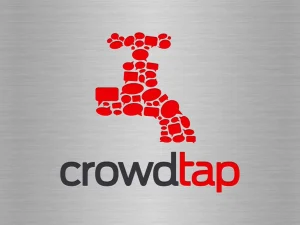In today’s fast-paced world where burnout seems almost inevitable, finding a career that allows you to breathe might feel like searching for a unicorn. But trust me, slow-paced jobs not only exist—they’re thriving and often come with surprising benefits beyond just lower stress levels. Let’s explore some of the best slow-paced jobs that can provide both financial stability and the mental space to actually enjoy your life outside of work.
Librarian
Working as a librarian offers one of the most peaceful work environments you can find in today’s job market. The stereotypical quiet of libraries isn’t just a cultural trope—it’s a genuine benefit for those who thrive in calm spaces.
Librarians typically spend their days organizing collections, helping visitors find resources, planning community programs, and managing digital catalogs. While there are busy moments, particularly during special events or at public libraries after school hours, the overall pace remains measured and predictable.
The median salary for librarians ranges from $55,000 to $65,000 annually, though positions requiring advanced degrees or specialization can pay significantly more. Most positions require a Master’s degree in Library Science (MLS), though some entry-level positions are available with just a bachelor’s degree.
Sell Printables

The digital product space has created incredible opportunities for creative individuals to generate income at their own pace. Selling printables—digital files that customers purchase and print themselves—has become one of the most flexible slow-paced jobs available.
Printables can include planners, wall art, greeting cards, budget trackers, educational worksheets, and countless other items. The beauty of this business model is its scalability and passive income potential. You create a product once and can sell it indefinitely with minimal ongoing work.
The workflow typically involves designing products during your creative hours, setting up your online shop (on platforms like Etsy, Shopify, or your own website), and handling occasional customer service. Unlike many jobs, there’s no constant demand for your immediate attention throughout traditional working hours.
Income varies dramatically based on your marketing efforts, product quality, and niche selection. Many successful printable sellers earn between $2,000 and $10,000 monthly, with some reaching six figures annually.
Starting costs are minimal—just design software (many use affordable options like Canva), a computer, and modest marketing expenses. No formal education is required, though design skills and understanding your target market are essential for success.
Proofread Anywhere
Professional proofreading has made a seamless transition into the age of remote work, making it a great choice for people looking for a flexible, slower-paced career. You will check documents for spelling, grammar, formatting, and inconsistencies as a proofreader.
One aspect that makes proofreading particularly suited to a slower pace is the ability to set your own schedule and workload. Many proofreaders work as freelancers, choosing projects that interest them and setting their own deadlines within client parameters.
The work itself is methodical and detail-oriented rather than rushed and chaotic. You’ll spend your time focusing deeply on one document at a time, making steady progress through careful reading rather than multitasking or handling constant interruptions.
Entry-level proofreaders typically earn $20-25 per hour, while experienced professionals with specialized knowledge (legal, medical, technical) can command $40-60+ hourly. Online courses like “Proofread Anywhere” offer comprehensive training, though natural language skills and attention to detail are the most important prerequisites.
Graphic Designer
While some graphic design positions can involve tight deadlines and high-pressure environments, many designers have created deliberately slow-paced careers by selecting their clients and projects carefully.
Graphic designers who specialize in brand identity, book covers, or illustrative work often have longer project timelines than those working in advertising or news media. This allows for more thoughtful creative processes and fewer emergency requests.
Freelance graphic designers have particular control over their pace, as they can limit their client load, choose projects with reasonable timelines, and schedule dedicated creative time versus client communication time.
The average salary for graphic designers ranges from $45,000 to $75,000, though freelancers’ incomes vary significantly based on specialization, client base, and experience level. A bachelor’s degree in graphic design is helpful but not strictly necessary—a strong portfolio demonstrating your skills often matters more to clients.
Gardener

Professional landscapers and gardeners create a naturally more measured pace by working with the seasons rather than imposed deadlines. Planting, pruning, lawn care, seasonal upkeep, and occasionally landscape design are all tasks that gardeners usually handle. The work offers mental and physical benefits by fusing planning, plant knowledge, and physical activity.
While weather considerations and seasonal rushes can create busy periods, the overall profession respects natural growth cycles and doesn’t typically involve emergency calls or round-the-clock availability.
Professional gardeners and landscapers earn between $30,000 and $50,000 annually, with specialized landscape designers earning significantly more.
Massage Therapist
Massage therapy offers a uniquely calm work environment where the professional pace is deliberately slowed to create therapeutic benefits.
Licensed massage therapists typically see a limited number of clients daily (often 4-6), with sessions spaced to allow for rest between appointments. The nature of the work itself requires presence and mindfulness rather than rushing or multitasking.
Many massage therapists cite the meditative aspects of their profession as a major benefit. The focused nature of helping one client at a time creates a workflow fundamentally different from jobs involving constant task-switching or competing demands.
Massage therapists earn an average of $45,000-$60,000 annually, with specialized therapists in sports massage or medical settings often earning more. Training requirements vary by state but typically involve 500-1,000 hours of education and passing a licensing exam.
Dog Sitting
Professional pet sitting, particularly dog sitting, has grown from a casual side gig to a legitimate career option with excellent potential for a low-stress lifestyle. Dog sitters typically offer in-home stays, daily visits, or boarding in their own homes. The work involves feeding, walking, playing with, and providing companionship to pets while their owners are away.
The schedule is often built around regular check-ins rather than constant demands, with natural breaks between responsibilities. Many pet sitters describe their work as bringing joy and companionship without the intense pressure or deadlines common in other fields.
Income varies widely based on location and services offered, with professionals in high-income areas earning $50,000+ annually. Rural or part-time sitters might earn $20,000-$30,000. No formal education is required, though certifications in pet first aid and professional memberships can help build credibility.
Yoga Instructor
The profession itself centers around presence, breath, and intentional movement—principles that often extend to how instructors structure their careers.
Yoga teachers typically work part-time hours, teaching several classes weekly rather than following traditional 9-5 schedules. Many instructors describe the rhythmic nature of their work—guiding students through sequences, demonstration, adjustment, and rest—as creating a naturally balanced pace.
While building a teaching schedule might initially require hustling between different studios, established instructors often create more sustainable schedules focused on quality over quantity of classes.
Income ranges widely, with average earnings between $35,000 and $75,000 annually. Most positions require a 200-hour yoga teacher training certification, with additional specialized training often increasing earning potential.
Transcriptionist

Transcription work—converting audio recordings to written text—offers a methodical pace perfect for detail-oriented individuals seeking calm work environments.
Transcriptionists typically work with recorded interviews, meetings, medical notes, legal proceedings, or media content. The work involves careful listening and accurate typing, with quality valued over speed.
What makes transcription particularly well-suited for those seeking a slower pace is the clearly defined nature of each project. You work through one audio file at a time, making steady progress without the constant interruptions or shifting priorities common in many modern workplaces.
General transcriptionists earn around $15-25 per hour, while specialized medical or legal transcriptionists can earn $25-35+ hourly. Training programs are available but not strictly required for general transcription, though specialized fields like medical transcription typically require formal training.
Conclusion
Finding a slow-paced job isn’t about avoiding hard work—it’s about choosing work that allows for focus, quality, and sustainability. Whether you’re seeking an entirely new career or looking to transition your existing skills into a more balanced lifestyle, these options demonstrate that lower-stress work environments do exist across various industries and skill levels.
The best slow-paced jobs share common elements: they value quality over speed, allow for focused attention rather than constant multitasking, and often provide greater control over your schedule and workload. Many also offer the satisfaction of creating tangible results or providing meaningful services to others.
ALSO READ:
FAQs
Not necessarily. While some calm work environments may offer lower salaries than high-pressure corporate positions, many slow-paced careers provide competitive compensation, especially as you develop specialized skills or build your client base as a freelancer.
Absolutely. Many of these careers offer clear advancement paths through specialization, developing business skills (for freelancers), or moving into management roles. The key difference is that advancement often doesn’t require sacrificing work-life balance.
It varies by field. Some positions like librarian or massage therapist require specific education, while others like dog sitting or selling printables can be started with minimal formal training. Research your specific area of interest to understand the requirements.
Many of these careers are ideal for part-time exploration. Consider taking on freelance projects, weekend work, or volunteer opportunities to experience the field before making a complete career change.




